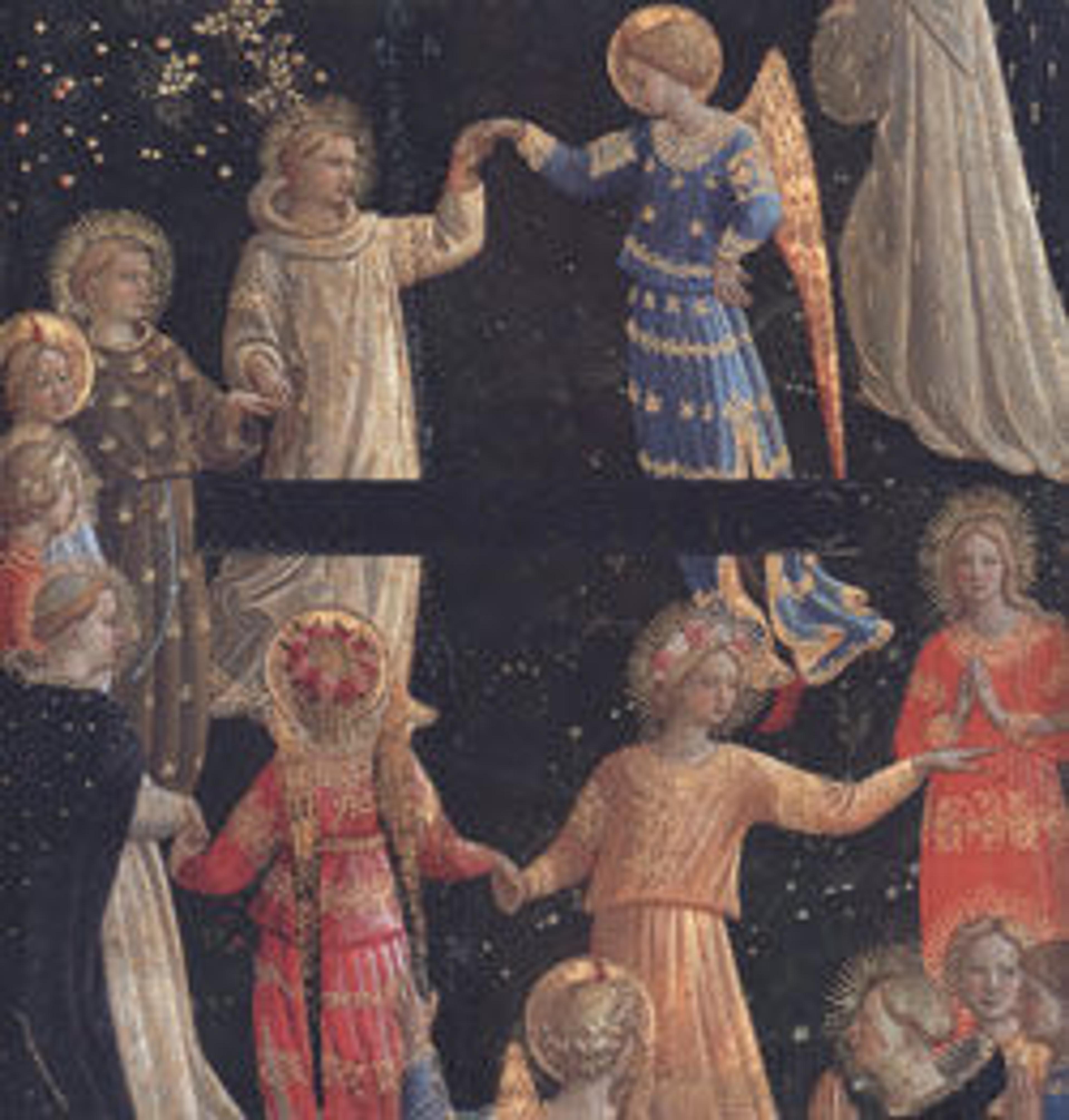The Nativity
Although long ascribed to Fra Angelico, this enchanting Nativity is probably by his pupil Zanobi Strozzi, who is especially known for his manuscript illuminations. The scene is from the base (predella) of an altarpiece. Especially the arc of angels, beautifully choreographed and dressed in a pleasing array of pastel-colored robes enhanced by gold decorations, is typical of Zanobi’s essentially decorative style. The altarpiece may date to about 1430–35. For more information about this painting, including a reconstruction of the altarpiece, visit metmuseum.org.
Artwork Details
- Title:The Nativity
- Artist:Attributed to Zanobi Strozzi (Italian, Florence 1412–1468 Florence)
- Date:ca. 1433–34
- Medium:Tempera and gold on wood
- Dimensions:7 3/8 x 17 1/8 in. (18.7 x 43.5 cm)
- Classification:Paintings
- Credit Line:Gift of May Dougherty King, 1983
- Object Number:1983.490
- Curatorial Department: European Paintings
More Artwork
Research Resources
The Met provides unparalleled resources for research and welcomes an international community of students and scholars. The Met's Open Access API is where creators and researchers can connect to the The Met collection. Open Access data and public domain images are available for unrestricted commercial and noncommercial use without permission or fee.
To request images under copyright and other restrictions, please use this Image Request form.
Feedback
We continue to research and examine historical and cultural context for objects in The Met collection. If you have comments or questions about this object record, please contact us using the form below. The Museum looks forward to receiving your comments.
